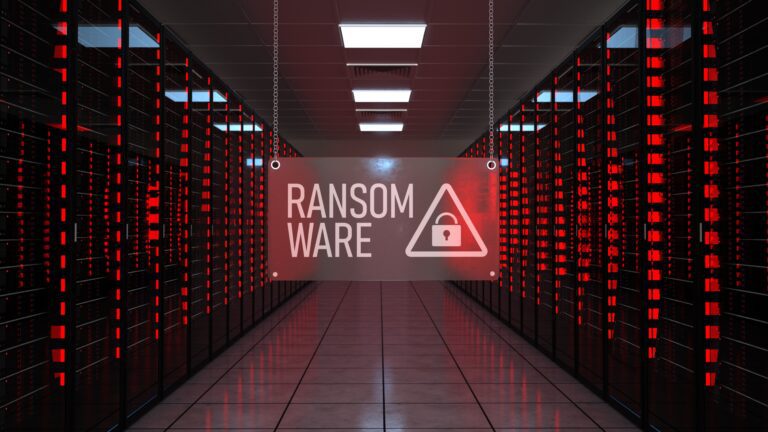Are You Prepared to Recover from a Ransomware Attack?

Businesses of all sizes constantly face the looming threat of cyberattacks. Among the most insidious of these is ransomware — a type of malware that encrypts files or locks users out of their systems until a ransom is paid. A ransomware attack can be devastating, but recovery is possible, especially if a business is ready for trouble. There are a series of smart steps that Managed Service Providers (MSPs) and business information technology (IT) professionals can take in the wake of a ransomware tragedy that enables the organization they protect to bounce back from a ransomware attack and get back to work fast.

Learn how to identify and mitigate malicious and accidental insider threats before there’s trouble! GET EBOOK>>
7 steps a business can take if hit by a ransomware attack
Cybersecurity Ventures predicts ransomware will cost victims approximately $265 billion annually by 2031, with a new attack targeting a consumer or business every 2 seconds as attackers continually improve their malware and extortion tactics. This estimate is based on a projected 30% year-over-year increase in damage costs over the next decade. When a business falls victim to a successful ransomware attack, every moment counts. However, with all the stress and tumult that comes in the wake of a cyberattack, it can be hard for everyone to be certain that they’re taking the right steps to limit the damage and get back on track.
Here are 7 steps businesses can take in the event of ransomware trouble:
1. Initiate the organization’s incident response plan
It is crucial for a company to have a cybersecurity incident response plan in place as a proactive measure to effectively mitigate the impact of potential cyberthreats. Having a well-defined incident response plan ensures that all stakeholders are aware of their roles and responsibilities during a cyber crisis, like a ransomware attack, to facilitate a coordinated and efficient response. Incident response planning, including drilling the plan, saves companies big bucks. IBM researchers determined that in the event of a cybersecurity incident that causes a data breach, like a ransomware attack, organizations with high levels of incident planning, preparation and testing saved S1.49 million compared to those with low levels.
A quality incident response plan helps minimize downtime, financial losses and reputational damage by enabling swift containment and resolution of security incidents. Going one step further is even better. Create unique response plans tailored to specific scenarios like a ransomware attack and drill them regularly. Companies with automated response playbooks or workflows designed specifically for ransomware attacks were able to contain them in 68 days or 16% fewer days compared to the average of 80 days for organizations without automated response playbooks or workflows.


Learn to defend against today’s sophisticated email-based cyberattacks DOWNLOAD EBOOK>>
2. Facilitate an immediate response
The first step in recovering from a ransomware attack is to contain the damage and prevent further spread. This involves disconnecting infected devices from the network, shutting down affected systems and notifying relevant stakeholders, including IT personnel and management. By isolating the affected systems, organizations can prevent the malware from spreading to other parts of the network and causing additional harm.
The time that it takes for a company to detect and contain a data breach, known as the breach lifecycle, is a critical factor in determining the final cost of that data breach. IBM researchers determined that a data breach with an identification and containment time of under 200 days costs organizations $ 3.93 million. Compare that to the big financial hit that businesses take if the breach lifecycle is extended. Data breaches with a breach lifecycle of over 200 days cost $ 4.95 million — a difference of 23%.
3. Assess the impact carefully
Once the immediate threat has been mitigated, the next step is to assess the impact of the attack. This involves identifying which systems and data have been compromised, determining the extent of the encryption and evaluating the potential damage to business operations. Conducting a thorough assessment allows organizations to prioritize their recovery efforts and allocate resources effectively.
4. Engage with law enforcement
Ransomware attacks are criminal offenses, and organizations should report them to law enforcement agencies. Engaging with law enforcement not only helps in the investigation and apprehension of cybercriminals but also provides access to resources and expertise that can aid in the recovery process. Additionally, reporting attacks can help law enforcement agencies track and disrupt ransomware operations, ultimately reducing the threat to other organizations.


See why choosing a smarter SOC is a smart business decision. DOWNLOAD AN EBOOK>>
5. Enhance cybersecurity measures
Recovering from a ransomware attack is an opportunity for organizations to strengthen their cybersecurity defenses. This involves implementing additional security measures, such as endpoint protection, network segmentation and employee training on cybersecurity best practices. By learning from the attack and addressing any vulnerabilities that were exploited, organizations can reduce the risk of future incidents and better protect their data and systems.
6. Educate employees
Employees are often the weakest link in an organization’s cybersecurity defenses, so it’s crucial to educate them about the risks of ransomware and how to prevent attacks. Training programs should cover topics such as identifying phishing emails, avoiding suspicious links and attachments, and reporting any security incidents promptly. By raising awareness and instilling a culture of cybersecurity awareness, organizations can empower their employees to play an active role in preventing ransomware attacks.
7. Evaluate your incident response plan and procedures
Recovering from a ransomware attack is a challenging and complex process, but it is not insurmountable. By taking proactive measures to enhance cybersecurity, businesses can be put in a position to minimize damage and bounce back from an attack stronger and more resilient than ever. Remember, preparation is key — investing in cybersecurity measures and regularly testing incident response procedures can help mitigate the impact of ransomware attacks and protect your organization’s most valuable assets.



Learn how to identify and mitigate malicious and accidental insider threats before there’s trouble! GET EBOOK>>
Make ransomware recovery easier with Datto EDR’s Ransomware Rollback
Datto EDR includes Ransomware Detection and Ransomware Rollback, two unbeatable features that help IT professionals limit the spread of a ransomware attack and begin the recovery quickly.
Ransomware Detection is a unique and powerful anti-malware technology that identifies known and unknown types of ransomware and kills the encryption process once an attack begins. As fast as Ransomware Detection is, the attacker’s encryption process always strikes first, meaning some files become encrypted before Ransomware Detection can kill the process and isolate the endpoint.
Ransomware Rollback is a lightweight application that tracks changes on endpoint disk space, providing rollback functionality for files and databases impacted by ransomware attacks. Unlike other EDR applications that offer similar rollback capabilities, Datto EDR with Ransomware Rollback does not rely on Windows shadow copy, which is often targeted by ransomware attacks. Ransomware Rollback even restores deleted files, such as those hit by a wiper attack or files deleted by accident.
Learn more about Ransomware Rollback and Datto EDR. DOWNLOAD THE FEATURE SHEET>>


Learn more about growing supply chain risk for businesses and how to mitigate it in a fresh eBook. DOWNLOAD IT>>
Kaseya’s Security Suite Helps Businesses Mitigate All Types of Cyber Risk Affordably
Kaseya’s Security Suite has the tools that MSPs and IT professionals need to mitigate cyber risk effectively and affordably, featuring automated and AI-driven features that make IT professionals’ lives easier.
BullPhish ID — This effective, automated security awareness training and phishing simulation solution provides critical training that improves compliance, prevents employee mistakes and reduces a company’s risk of being hit by a cyberattack.
Dark Web ID — Our award-winning dark web monitoring solution is the channel leader for a good reason: it provides the greatest amount of protection around with 24/7/365 human and machine-powered monitoring of business and personal credentials, including domains, IP addresses and email addresses.
Graphus — Automated email security is a cutting-edge solution that puts three layers of AI-powered protection between employees and phishing messages. It works equally well as a standalone email security solution or supercharges your Microsoft 365 and Google Workspace email security.
RocketCyber Managed SOC — Our managed cybersecurity detection and response solution is backed by a world-class security operations center that detects malicious and suspicious activity across three critical attack vectors: endpoint, network and cloud.
Datto EDR — Detect and respond to advanced threats with built-in continuous endpoint monitoring and behavioral analysis to deliver comprehensive endpoint defense (something that many cyber insurance companies require).
Vonahi Penetration Testing – How sturdy are your cyber defenses? Do you have dangerous vulnerabilities? Find out with vPenTest, a SaaS platform that makes getting the best network penetration test easy and affordable for internal IT teams.
Learn more about our security products, or better yet, take the next step and book a demo today!


Read case studies of MSPs and businesses that have conquered challenges using Kaseya’s Security Suite. SEE CASE STUDIES>>